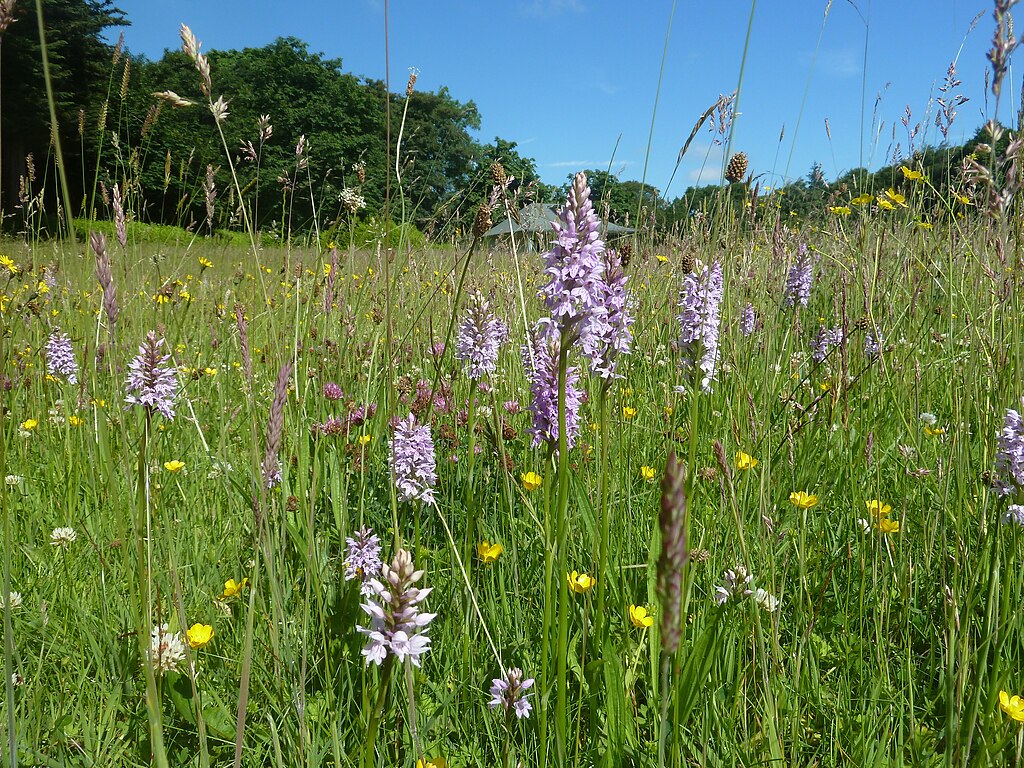Pollen from grasslands fertilised with nitrogen could cause more allergies
In recent decades, the rate of pollen allergies has increased worldwide. One of the reasons being considered is the increase in atmospheric nitrogen pollutants. Now, a study published in the journal The Lancet Planetary Health estimates that grasslands fertilised with nitrogen release six times more pollen and that this pollen is five times more allergenic than that from unfertilised fields.

José Gómez Rial - alergias campos EN
José Gómez Rial
Head of the Immunology Department at the Complejo Hospitalario Universitario de Santiago de Compostela (CHUS), Servicio Gallego de Salud (SERGAS)
The study shows that nitrogen-enriched meadows produce up to six times more pollen than their unfertilised equivalents, and that this pollen has a greater capacity to activate immune cells in allergy sufferers, with a 5.1-fold increase in sensitivity in basophil activation tests and a 1.3-fold increase in specific immunoglobulin E (IgE) levels. Although the exact mechanism is not detailed in the article, it is plausible that excess nitrogen modifies the biochemical composition of pollen, increasing the quantity or proportion of allergenic proteins synthesised by the plant, which would enhance its capacity to activate the immune system.
These findings have important implications for both ecology and health. On the one hand, they reveal that nitrogen pollution not only affects plant biodiversity, but can also directly aggravate highly prevalent allergic diseases such as rhinitis or seasonal asthma. On the other hand, they emphasise the need to integrate public health into environmental policies: reducing nitrogen emissions and limiting the use of fertilisers would not only contribute to preserving ecosystems, but could also reduce the burden of disease associated with respiratory allergies. The concept of One Health applies not only to human and animal health, but also to plant health and the environment.
África González-Fernández - alergia campos EN
África González-Fernández
Professor of Immunology at the University of Vigo, researcher at the Galicia Sur Research Institute (IIS-GS) and member of the RAFG
The experiment is well-reasoned, but they analyse few cases (25 people in rich areas and 25 in areas not enriched with fertilisers). It has not been done in other areas, and the in vitro trials were carried out with 20 subjects. There is a lack of healthy controls.
There are studies from years ago on the increase in allergy and nitrogen fertilisers, as well as on NO2 levels and allergy. There is a lot of literature on the subject. Other studies have been carried out measuring IgE levels and they have included a basophil release test, which is currently used routinely in immunology laboratories in hospitals. They conclude that allergic patients recognise more proteins in the pollen of fertilised plants (enriched in nitrogen) than in those that are not fertilised, with more production of specific IgE and more release of mediators by basophils when exposed to fertilised pollen.
The same authors wrote a review in 2023: Impact of environmental nitrogen pollution on pollen allergy: A scoping review. In Table 4 they describe the mechanisms by which NO2 would affect pollen and the allergic response.
I see several limitations:
- The low number of allergic patients.
- They do not include control cases.
- At high pollen concentrations, there are no in vitro differences in the basophil release study. They do not correlate these data with the actual pollen count that could be in the environment.
- They have only taken into account serum levels of IgE antibodies against pollen, basophil release and immunoblot studies [a technique for the identification of proteins]. They have not studied cellular responses (T lymphocytes, NK cells) which they do carry out in other studies. As an example of immunological studies, a study was also carried out in Madrid years ago on the ability of pollen to activate lymphocytes and NK cells, and it has been seen that pollen-allergic asthmatic patients, when they live in more polluted areas, present more and more severe symptoms.
- There is already previous data on pollen: Cuinica et al., Zhao et al., Chassard et al.
Daelemans et al.
- Research article
- Peer reviewed



